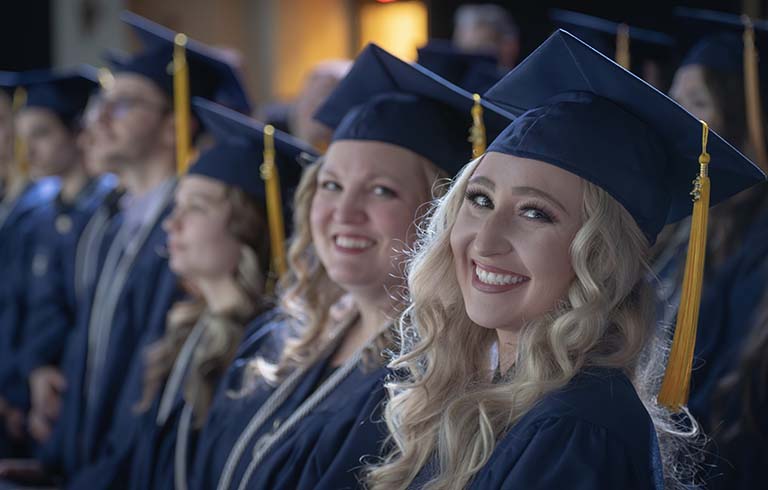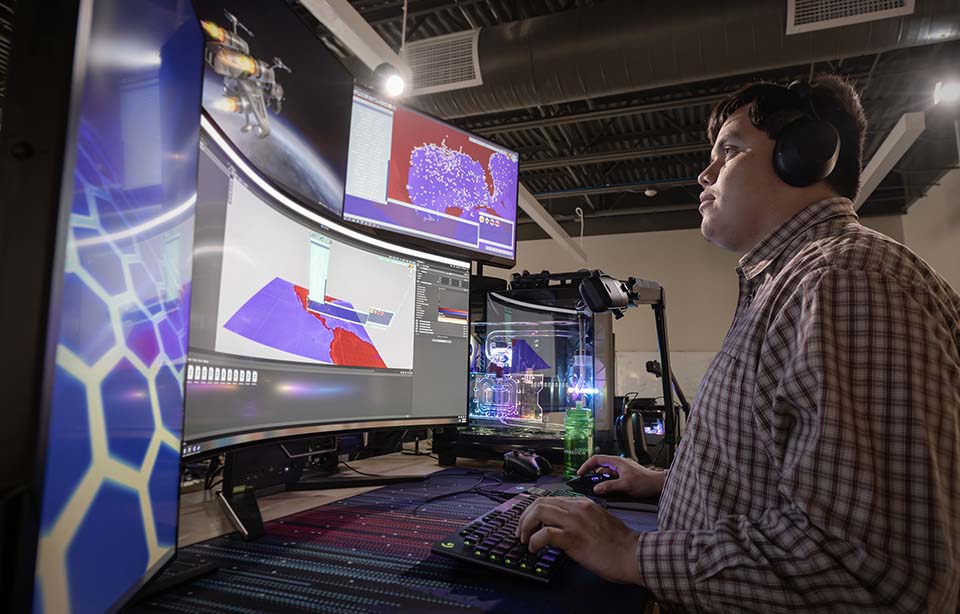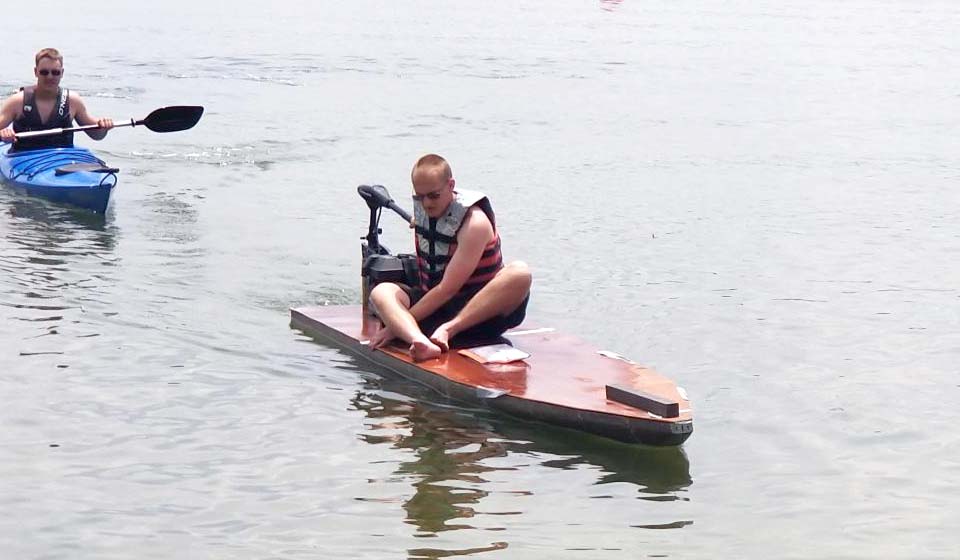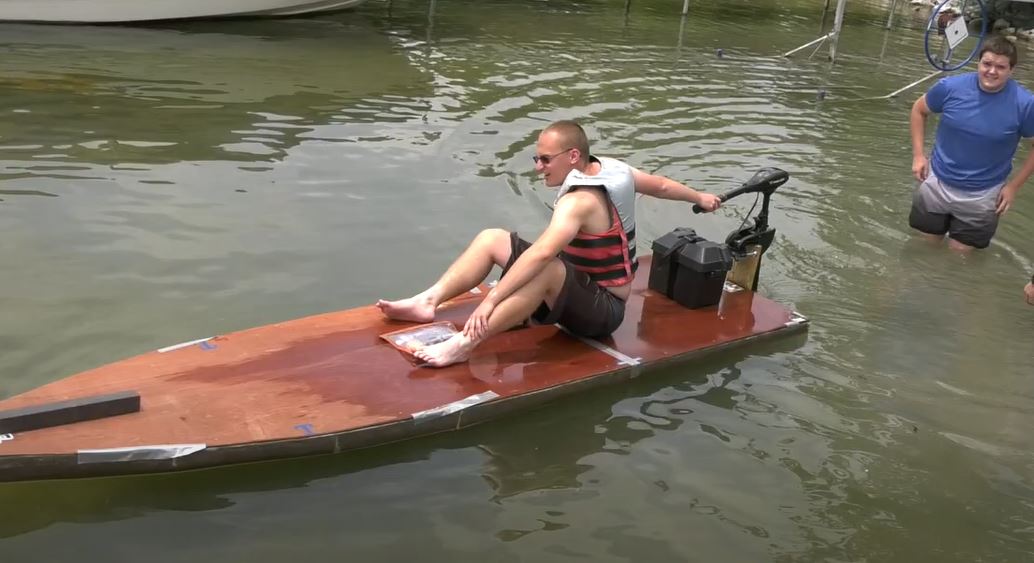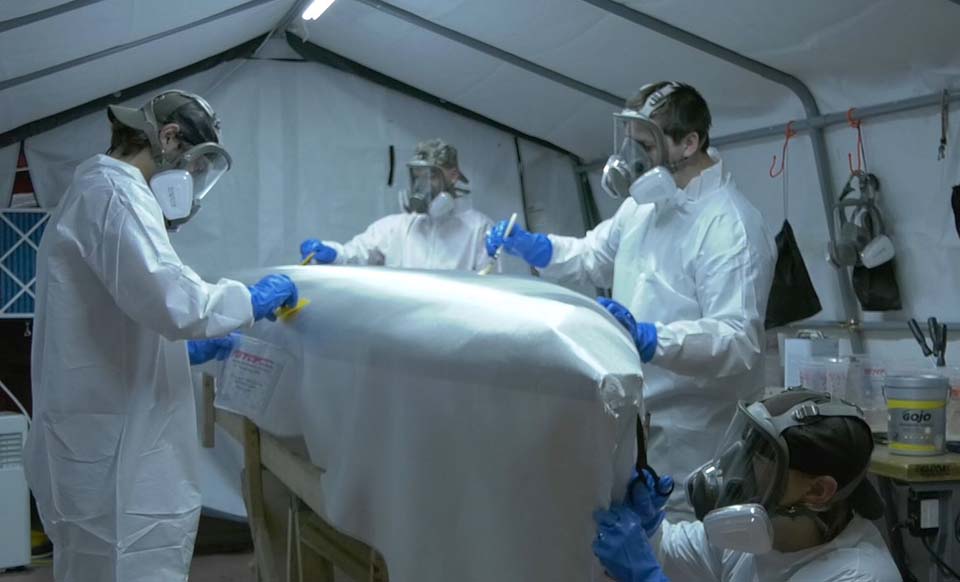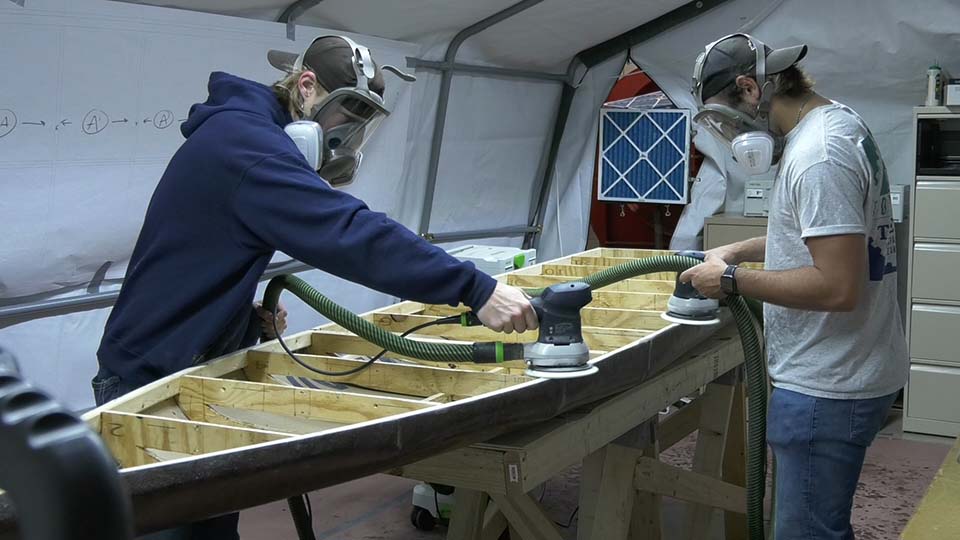While practical experience has always been central to education at Trine University,
a group of students from the Allen School of Engineering and Computing have had the
opportunity to work on a real-world project far beyond anything else in the school’s
history.
Funded by a multimillion-dollar grant from the Department of Defense and the U.S.
Navy, Trine University students and faculty worked with the Naval Surface Warfare
Center Crane Division in the summer and fall of 2023 to help develop prototype vessels
that can be controlled by artificial intelligence for a variety of missions, including
intercepting illegal drug shipments.
The effort will climax with the Artificial Intelligence Maritime Maneuver Indiana
Collegiate Challenge (AIMM ICC) in April. Universities across Indiana will have the
opportunity to compete and demonstrate the ability to make a fully autonomous low-profile
vessel (LPV) with object detection and identification.
The Trine contingent was divided into two teams: mechanical engineering students who
developed an LPV, and computer and information technology students who worked on the
artificial intelligence (AI) to control the vessels.
Building the boat
“Before we could develop a smart boat, we needed a boat,” noted Jon Koch, Ph.D., professor
in the Wade Department of Mechanical and Aerospace Engineering.
Koch and other faculty and staff within the department were tasked with setting up
the initial framework and selecting the student team to build the ideal vessel for
the competition. The process included recommending tools for design, simulation and
advanced manufacturing as well as experimental facilities to test the simulations.
He described the students’ task as “identifying the tradeoffs between making a design
that was easy to manufacture out of readily available materials and making a design
that carried a respectable payload a decent distance at a safe speed, using a minimal
power source.”
A group of mechanical engineering majors eventually built nine LPVs.
“The goal was to build a low-cost boat using hand tools, which presents quite the
challenge. After some trial and error, we nailed down a process to efficiently produce
high-quality boats. The resulting vessels were watertight and could carry almost a
ton of cargo,” said Davey Acres, a student who was part of the project.
From research to final product
Students took on specific roles during the process. Daniel Siebeneck researched and
reported naval nomenclature, designed and tested boat designs in CAD (computer aided
design) and CFD (computational fluid dynamics), and was the “captain” of the physical
boat when the team tested it at Lake James.
“I learned and utilized a lot of skills in and around the engineering concept of iteration
and prototyping,” he said. “Our team had to move fast, often dealing with new designs
and ideas, so that by the end of the term we had the best possible project.”
Sterling Haylett said his primary role in the project was to research and coordinate
the material purchases necessary to build an operational low-cost LPV.
“By combining simple fiberglass composites with thin sheets of plywood, it proved
exceptionally cheap to produce a seaworthy vessel,” he said.
The team began the building process by cutting out wood to size based on engineering
drawings.
“I was able to use my knowledge of hand tools to help,” said Mitchell Dickman, another
team member. “Learning how to use machines such as the laser and plasma cutter from
my classes here at Trine also helped me to make sure that templates were etched out
on wood to the exact dimensions that needed to be cut out for the boats.”
They then laid fiberglass on the hull, covered it with an epoxy resin mixture and
used sanders to make sure the fiberglass was smooth and safe for transportation purposes.
To do so, the team created a controlled environment inside Trine’s Student Design
Center. Temperature and humidity were closely monitored to allow the epoxy to cure
properly.
“Learning how to fiberglass and create boat structure was a challenge, but after many
generations and with the help of the Trine faculty we were able to create a product
the group is very proud of,” said Acres.
“We were tasked with building each boat that would be used for the competition for
us as well as the other schools,” Dickman said. “With the experience we gained from
the internship beforehand, we were able to build all six boats that will be used in
a little under two weeks.”
Advanced work
In addition, Haylett produced an 83-page, step-by-step, technical manual that allows
anyone to re-create the process.
“It includes everything from necessary tools, materials and safety equipment to gluing,
cutting and stapling instructions all laid out in a logical order,” he said.
Koch said the project enhanced engineering education at Trine by exposing students
to advanced diagnostic and measurement techniques. He is continuing to work with vendors
to order a water tunnel and laser instrumentation, which will allow even more fundamental
testing.
Through their work on the project, Siebeneck and Dickman have been hired by NWSC Crane
to work after they graduate in May.
“I also learned great leadership skills,” Dickman said. “As a result, I was chosen
to be an assistant captain for the ACHA D2 hockey team here on campus this year.”
Custom-built computers, lab
Students on the CSIT team designed and built five computational fluid dynamics computers
and seven AI/gaming computers, all housed in a lab they also designed inside the Steel
Dynamics Inc. Center for Engineering and Computing.
They also created a server that will house AI software and the databases needed to
support the high-end computers.
“We completely custom-designed the room and built it to our needs,” said Brock Taulbee,
a computer and information technology major. “We have top-of-the-line equipment for
both AI research and mechanical engineering research.”
Alex Kutsenok, assistant professor for computer and information technology, led the
software development.
His involvement with the project began in February 2023 with a trip to Crane. The
Navy personnel he met with expressed the need for an AI simulation that could direct
large numbers of autonomous ships and planes in the Gulf of Mexico.
“Artificial intelligence and multiagent systems was my personal research concentration
in graduate school, and I have published multiple papers in this field since,” he
said. “Consequently, I proposed to the Navy that Trine University and its highly motivated
students can and would build this software simulation for them.”
Taulbee served as team lead as well as part of the research and testing team, which
worked on simulations and testing for the AI. One major challenge, he said, was to
keep on task in a project with such a large scope.
“It’s easy to try and jump ahead and do things that don’t have to be done right away,”
he said. “Completing our milestones and staying on task was the most important thing.”
Student-driven
Kutsenok said the students are “responsible for 100% of the coding, testing and research
for this project.”
“This is truly a student-driven project, where everything you see in the simulation
was researched, created and tested by a Trine student,” he said.
The students have completed building the software simulation and are beginning to
use it to create and train artificially intelligent agents to operate successfully
in that environment. They also added the Pacific and Atlantic oceans to the simulation.
Besides technical programming skills from his CSIT major, Taulbee said he was able
to apply skills he learned in his project management class to his leadership role.
He hopes to eventually work in cybersecurity or AI.
“I am so proud to see this lab up and running,” he said. “I helped with the planning,
but (CSIT majors) Chris (Ferguson) and Mason (Bledsoe) did an amazing job of putting
it all together. I take pride in knowing this lab will be used even after I am gone
from Trine.”
“Our students began this project with little knowledge of AI and maritime rules of
engagement. However, as they have worked and will continue to work on this project,
they are gaining a lot of experience and practice in these areas,” said Kutsenok.
“I am certain that the skills they are gaining will be highly valued by any prospective
employer who is looking for graduates with practical, real-world projects under their
belts.”
